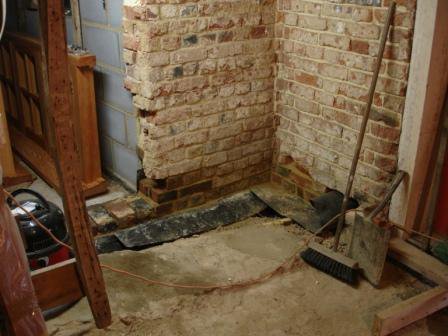Zebra said:Perfect middi, thank you. That makes perfect sense and is a very comprehensive answer. It does sound very major, but achievable. Only a couple of possible issues arise in my mind which I'd be grateful if you'd consider:
- where the long rear wall turns the corner and becomes an internal wall, separating the old part of the house from the new extension, would it be advisable to continue all the way along the internal wall, or to stop a certain distance in from the corner? (Marked as ?1 on the attached drawing)
- where the long rear wall meets the solid base of the bread oven, I don't imagine that I can remove bricks without the stones that fill the base of the bread oven falling out and the whole thing collapsing. I won't know until I try. If I were to just stop at that corner, can you see a problem with that? (marked as ?2 on the attached drawing)
Thank you for your advice.
A very good and relevant question.
If you do not carry the insertion of dpc in all the building ( now) internal walls, you have to accept the risk that capillary action of the soft red bricks will draw water and moisture from below ground and will rise up the wall. Also if you intend to fit a DPM in the floor area without inserting a dpc in the internal foundation walls, and lapped into it, you will again run the risk of water and damp below DPM finding it's way
into the base of the wall and the damp would not be eliminated, in certain conditions it could be aggravated. This is the reality of the situation.
You can certainly make a choise and stop inserting dpc as soon as you have reached the wall " bend" but must be prepared for more disruption at a later date if id does not work. Ironically, as earlier mentioned, it is not the materials that will cost you much money it is only time and labour. As an example, It took me 10 days to insert dpc and dpm in a soft red brick built outhouse ( 6.5 x 3.5 m) which I eventually converted into a office/study.
I am not suggesting that all soft red brick built buildings should undergo this drastic measure to get rid of damp, most fully bratheable floors and brickwalls without the intervention of modern style dpc's or dpm's do extremely well and no damp is experienced. I am only suggesting the above drastic measures in response to the fact that " everything" has been done and the damp is still evident.
Also, it has to be remembered, Zebra, that some buildings in certain situations need the aid of modern materials to keep them dry for two extremely valid reasons. 1) nowdays we hate damp, 2) the intended use of the building and living standards to which we have been accustomed. Our forefathers used to put a heavy coat on and light the fire, the draughty windows would take care of internal ventilation and the discussions that followed resulted in the invention dpc's, dpm's, thick insulation, double glazing and all sorts of other gadgets that we seem to be unable to do without. ( evolution at it's best
Middi


